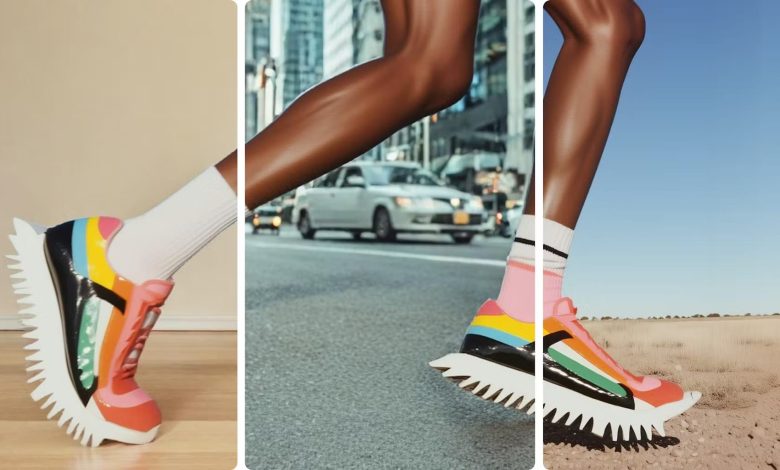
You’ve probably seen it: output that looks impressive but doesn’t quite help anyone move forward. Harvard Business Review now has a name for it: workslop. It’s the dressed-up busywork that shows up in long documents, polished presentations and increasingly in visual media.
And, it costs real money and time. According to a recent study, 40% of U.S. desk workers received workslop last month and spent on average two hours untangling the mess that sloppy AI output created. The downstream effects hit productivity, morale and collaboration.
But here’s the thing: workslop doesn’t just live in the text editor. It’s creeping into design tools, media libraries, and marketing campaigns. And if your visual pipeline isn’t designed to handle it, workslop won’t just waste your time – it will quietly wreck your performance.
What visual workslop actually looks like
While a text-based workslop might be a jumbled project brief or an AI-generated summary with no insight, visual workslop wears a different disguise. It might look like:
- A 600KB thumbnail that should be 60KB
- An image cropped for desktop and dumped into mobile without a second thought
- A marketing visual rendered in a format that won’t load in half your target regions
- A brand asset that loses its punch due to lazy compression
Each of these looks fine at first glance. But each one creates drag. They cause rework. Or worse, they slip through and quietly chip away at page speed, user trust, and creative consistency.
Why visual workslop is so easy to create
The surge in generative tools and one-click editors has been a gift to speed, but not necessarily to quality.
It’s now easier than ever to export a social tile, resize a product shot, or swap backgrounds. And with that ease comes a tempting shortcut: produce the “good enough” version, then move on. But without built-in guardrails – and without context – those shortcuts turn into someone else’s headache.
That “someone else” is often a colleague – a designer resizing a bloated asset, a developer debugging a layout that breaks at tablet width or a marketer explaining why the hero image looks soft on Retina displays. This is visual workslop: media output that shifts the burden downstream.
The hidden cost of clogging the visual pipeline
The research estimates a nearly $200/month “workslop tax” per employee – this could mean up to $9M a year for a 10,000-person company. In visual teams, that cost rarely shows up in spreadsheets. But it’s hiding in your workflows:
- Designers duplicating effort across platforms
- Engineers writing hacks to fix inconsistent media
- Marketing teams recreating assets they already had (but couldn’t use)
Visual workslop also puts subtle strain on team dynamics. When quality drops or issues emerge without clear ownership, trust erodes, people become reluctant to reuse assets, review cycles get longer and collaboration becomes guarded. In short: visual workslop slows your content velocity and frays your creative culture.
What a healthy visual workflow looks like
The good news? You don’t need more tools – you need better systems. Here’s what that looks like:
- Single-source media: One origin image, transformed dynamically based on context
- Responsive-by-default: Output that adapts to devices, connection speeds, and user intent
- Smart automation: Transformations (resize, crop, format, optimize) handled automatically at delivery, not by hand
- Compression with context: Media that stays fast and beautiful across platforms
- Performance baked in: Every visual experience contributes to faster load times and cleaner UIs
Most importantly, a healthy pipeline shifts the work upstream. The effort happens where it’s most effective, not where it’s most annoying.
From visual workslop to visual integrity
AI isn’t the problem. The problem is mistaking automation for optimization. When images are generated or transformed without intention, it invites mess. But when teams use tools with care and workflows with foresight, automation becomes a creative accelerant.
So before you fire off that next image export or push another batch of assets live, ask yourself whether this visual will help someone move forward, or will just make more work? Don’t let sloppy images become your team’s next bottleneck. Build a pipeline that turns visual assets into visual experiences at scale, with speed, and without the slop.

